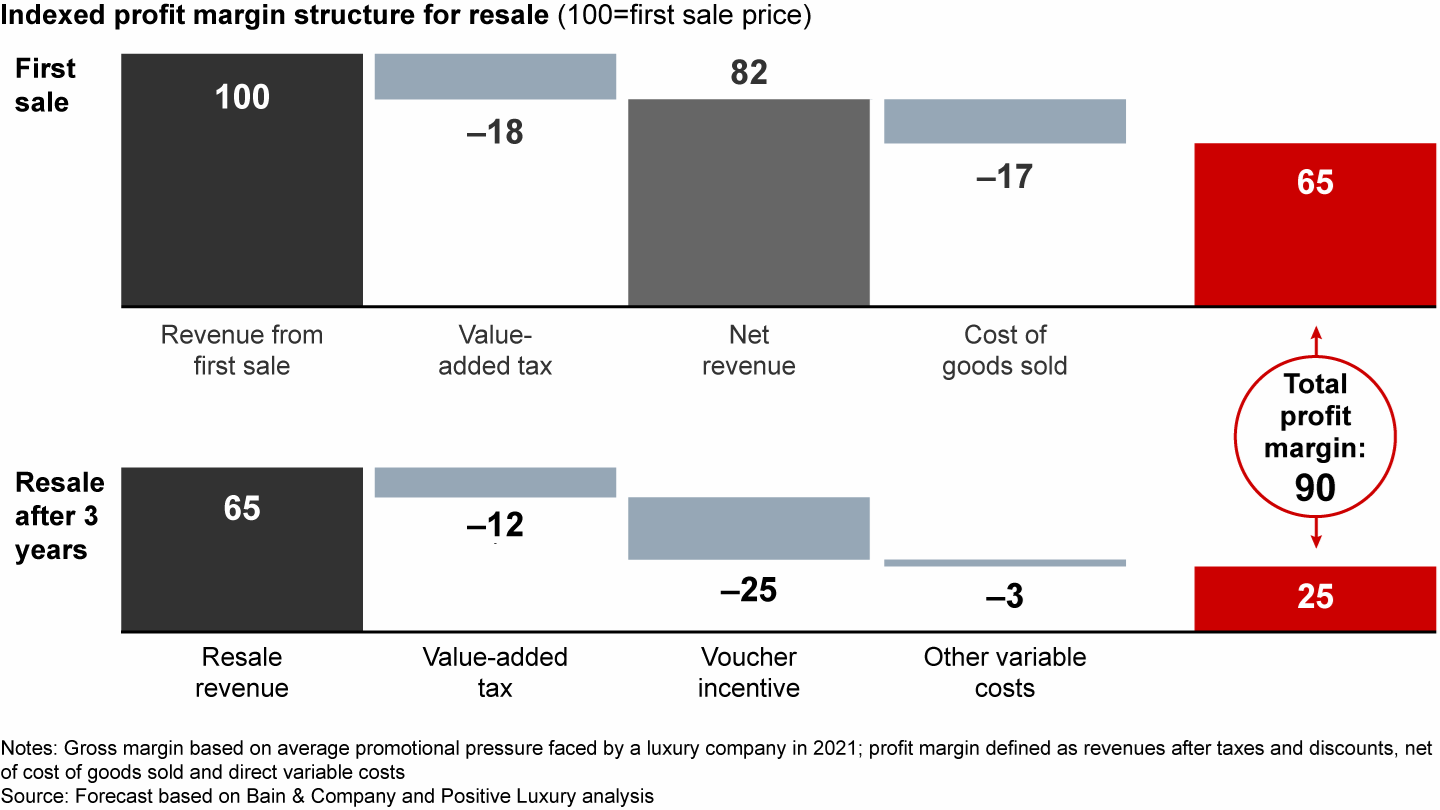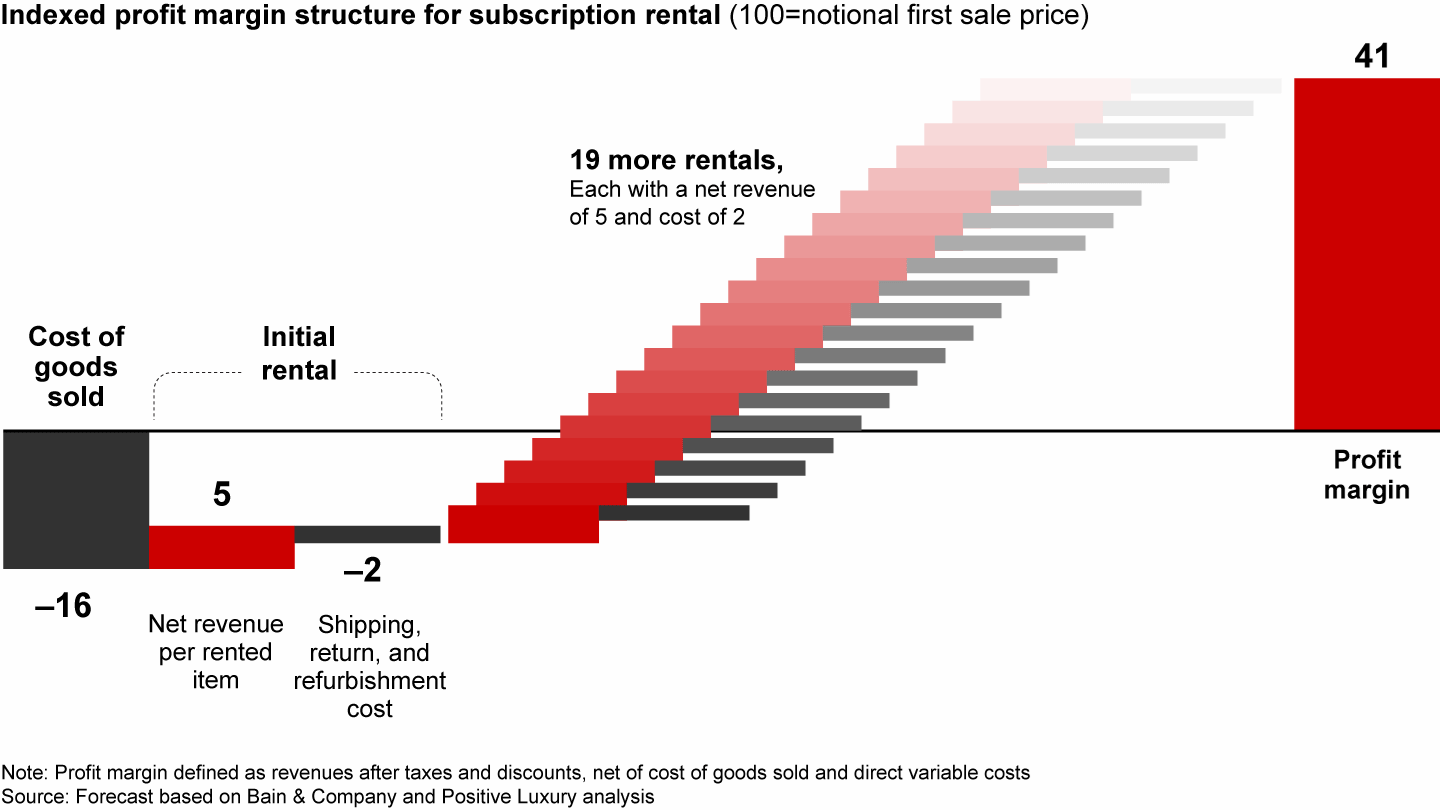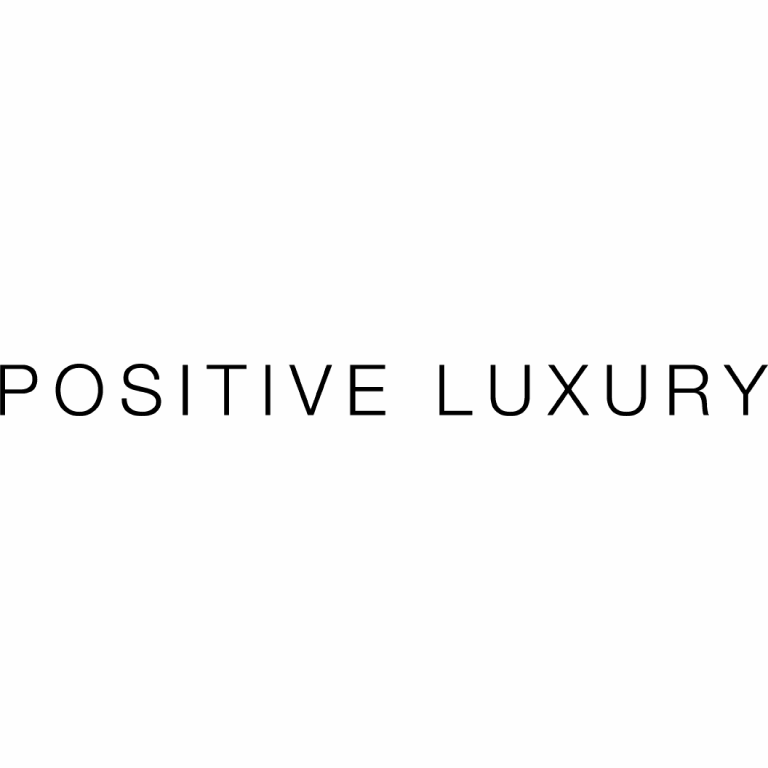Brief

Executive Summary
- We’ve drawn on our research to fast-forward to 2030 and paint a picture of LuxCo, a thriving and sustainable luxury brand.
- LuxCo succeeds because it redefined the purpose of its brand, decoupled growth from volume, made its supply chain fully transparent and traceable, maximized its environmental and social commitments, and boldly created economic value from sustainability.
- Executive teams today should take a holistic approach to sustainability, while moving quickly to ensure that more complex initiatives have time to bear fruit.
In luxury, the sustainability decade is underway. Generation Z, born from the mid-1990s to the early 2010s, is maturing into a cohort of adults who will reward brands that have a positive impact on the environment and society, and disconnect from those that do the opposite; many older consumers are already leaning the same way. Meanwhile, the global shocks caused by Covid-19 are only adding to the mounting pressure for more sustainable approaches across business and government.
Luxury brands feel the expectation rising. Many have issued powerful declarations of intent, with the aim of becoming agents of change when it comes to sustainability, not late adopters. The next 10 years will be about delivering on these commitments. Executive teams face the daunting challenge of identifying the actions needed to realize that longer-term goal of sustainable, profitable trading, while simultaneously positioning the business for the immediate post-Covid recovery.
To help with this task, Bain & Company has collaborated with sustainability specialist Positive Luxury. Together we’ve drawn on our research to paint a picture of what a leading luxury brand might look like in 2030. The brand, which we’ll call LuxCo, was established long before sustainability climbed the corporate agenda. It certainly hadn’t figured it all out by 2021, but LuxCo gradually changed its culture and business model over the ensuing decade, making sustainability core to its strategy, its employee and customer management, and its economic growth.
Written in collaboration with
Written in collaboration with

Five strategic evolutions were key to the rise of our notional (yet rigorously plausible) sustainability champion. LuxCo redefined the purpose of its brand, decoupled growth from volume, made its supply chain fully transparent and traceable, maximized its environmental and social commitments, and boldly created economic value from sustainability.
Redefining brand purpose
For decades, LuxCo’s main purpose had been providing products and services whose craft and scarcity fired the imagination and aspiration of consumers. Between 2020 and 2030, the consumer mood shifted, and LuxCo duly redefined this exclusive idea of luxury into something more like the ancient Greek concept of kalokagathia―loosely translated as “what is beautiful and good”―both for people and the planet, in this case.
The pandemic struggle was a particular catalyst for change. As the post-Covid recovery began, LuxCo laid the foundations for long-term change with a strategic exercise visualizing the world and the industry in 10 or 20 years. The work persuaded LuxCo that rising demand for more sustainable luxury goods (partly driven by a move to more durable and higher-quality products) was not a fad, but a structural change.
A makeover was never going to be enough; LuxCo realized it had to profoundly reimagine its work. Openness was vital to its purpose-driven transformation. Consumers would have punished it for inauthenticity if it hadn’t owned its mistakes along the way. Consistency was also key. LuxCo spread its updated values far beyond the C-suite, embedding them in its hiring, performance assessment, pay structures, and training. Patience was another virtue, given that these weren’t instant-payback investments. But LuxCo’s resolve was aided by a keen sense of the risk entailed in not investing.
Decoupling growth from volume
From the vantage point of 2030, the luxury industry can look back on nine years of recovery. After dropping by almost a quarter in the pandemic-hit 2020 (see the Bain report The Future of Luxury: Bouncing Back from Covid-19), luxury sales posted low single-digit gains for the rest of the decade. This was a reminder of the industry’s solid fundamentals. Yet the headline figures were only part of the story. Even more striking was the way some companies produced sales growth without relying on volume increases, minimizing their environmental impact in the process.
LuxCo was one of these brands. Its sales outperformed the market from 2025 without an increase in the volume of items manufactured each year. Instead, sales gains came from its nurturing of circular business models such as resale and rental, which were experimental in 2021 (and often pioneered by third-party platforms), but gradually matured over the decade (see Figure 1). In 2030, it focuses on the “product life-cycle value” derived from reselling the same item to many customers, as well as the old benchmark of lifetime value of individual customers.
LuxCo’s 2021–2030 revenue growth was fueled by rental and resale
LuxCo also cuts stock overages by making more of its products to order (giving the customer more personalization options in the process). Artificial intelligence boosts its forecast accuracy and pinpoints demand on a city-by-city level, further reducing overproduction. Most dead-stock fabric is upcycled into future collections or limited editions that can command a higher price.
LuxCo began reselling through a multibrand third-party platform, but took the process in-house after a few years when it realized the importance of controlling the resale conversation—shaping the narrative around “pre-loved” products, vouching for their provenance and condition, and giving resale an alluring sense of exclusivity. Second-generation near-field communication (NFC) has sped up both returns and authentication before resales.
In 2030, resales provide 20% of LuxCo’s revenues, helping it to reach a broader range of consumers. Resales also generate extra purchases of new items, paid for with the vouchers issued to customers when they sell used items back to LuxCo. Reselling in 2030 increases profit margin on a single product by 40%, while increasing the revenue per product by 65% (see Figure 2).
In 2030, reselling luxury goods could lift a brand’s profit margin by 40%


LuxCo’s rental platform is subscription-based and uses the store network as a logistical hub (one reason why LuxCo doesn’t farm out rental to a third party). In 2030, rentals represent 10% of LuxCo’s revenues. An item rented a typical 20 times generates a profit margin of 41% (see Figure 3). While that’s not as much as the 65% produced by traditional new product sales, rental diversification has the added benefit of enlarging the luxury customer base with new consumers for whom the brand would otherwise have been out of reach.
In 2030, the profit margin on renting out luxury goods could be about 40% by the 20th hire


Making the supply chain fully transparent and traceable
The supply chain is a visual presence in luxury shopping in 2030. When Mina, a Generation Z shopper, views a LuxCo product online, a map shows the origin of the components of that garment, bag or pair of shoes, as well as place and date of manufacture. She can see data on the environmental and social impact of LuxCo’s suppliers, as well as her own environmental impact if she makes the purchase (expressed as a function of how often she’s likely to use the item).
At checkout, she can offset her impact by donating to LuxCo’s foundation, which backs rain forest restoration. She can also see what LuxCo will do with the item at the end of its life, including how much of it will be recycled. If Mina browses in a physical store, the same information on supply chain and sustainability pops up on her device via old-fashioned NFC technology if she holds it next to a product.
LuxCo’s progress in this area accelerated in 2021, when it jettisoned past efforts at half-heartedly mapping its supply chain and began from scratch, tracing all relationships up to raw material producers and factoring in all the knock-on effects of its activities. Also vital: its embrace of technological advances, in areas such as blockchain, the Internet of things, robotic process automation, and data science.
In 2030, LuxCo’s supply chain is more localized and spans fewer suppliers, with whom it engages more deeply, with the aim of improving environmental and social outcomes, as well as quality and output. It manufactures in regions that were once famous for single-product (or single-process) expertise, but became synonymous with sustainability instead. This creation of a modern ecosystem is a source of resilience for the brand.
Maximizing environmental and social commitments
LuxCo defined a bolder ambition for sustainability early in the 2020s, one that fit the reformist mood of the post-Covid era. In 2030, it has progressed measurably against many of these environmental and social goals, although others have proved harder to crack. Crucially, where it has succeeded, LuxCo has challenged itself anew with even more demanding targets.
For instance, its greenhouse gas emissions are now well on the way to net zero by 2050, partly thanks to the rollout of renewable energy in all offices and factories, and in those of most of its partners. Some of its sites are poised to generate all their own energy from wind, solar, and biomass sources. But net zero isn’t LuxCo’s goal anymore in 2030; it’s targeting a net reduction in atmospheric carbon dioxide through innovative, nature-based solutions.
LuxCo’s workforce and boardroom is still not a perfect microcosm of the communities in which it operates, but it’s a lot more representative than it used to be. That’s partly a reflection of the work of its chief diversity officer, an empowered presence internally and externally. Her deft coordination of initiatives has helped LuxCo close the gap between aspiration and achievement on a range of diversity issues, and then increase expectations to spur further progress. But that hasn’t meant a one-size-fits-all approach across LuxCo’s global operations. Much of the progress is down to the way it has tailored measures to the specific conditions in local markets.
The same inclusivity is now at the heart of its marketing, which strives to avoid outdated beauty standards and embraces diverse body types, ethnicities, ages, sexual orientations, and gender identities. It collaborates with independent social media “think-fluencers,” who act as an extra conduit between customers and brand, and serve as an early-warning system for any marketing that fails the inclusivity test. Employees are empowered to be LuxCo advocates, too. In 2030, it’s been known for years that such messages can have more than five times the reach of brand-owned channels. And the employee voice is heard internally via board-level representation.
Creating economic value from sustainability
In 2021, it was still common for executive teams to see sustainability as a source of additional cost, rather than a long-term contributor to cash flow. LuxCo was a rapid convert to the latter point of view. In the early 2020s, it developed an economic value model for sustainability that’s now central to its corporate performance in 2030.
For taxes, the model includes maximizing incentives designed to align companies with national goals on reducing greenhouse gas emissions. LuxCo’s early work in cutting emissions across its entire supply chain allowed it to qualify for maximum relief. Its investments in regenerative agriculture, reforestation, and community programs cut its tax bill further. More broadly, key performance indicators that used to be isolated in silos marked “sustainability” and “finance” are now integrated successfully across the business, powering its decision making in areas such as customer loyalty. Likewise, the chief financial officer is a powerful sustainability champion.
LuxCo’s embrace of reporting reforms (both the financial and the environmental, social, and corporate governance kind) and cutting-edge metrics has helped it prove that sustainability creates economic value in its own activities. In 2030, it hasn’t issued quarterly results for years, having moved to annual reporting as soon as regulators and investors allowed. That lets a clearer narrative emerge, free of short-term noise. Global investors, under pressure to avoid firms that pollute the environment or damage communities, have confidence that LuxCo offers lower risk and higher growth than opaque peers. Its shares trade at a lofty multiple that reflects this trust.
A holistic approach above all
Our vision of luxury’s sustainable future imagines a leading brand in 2030, although that future may arrive several years sooner, given today’s pace of change. The picture we’ve painted is a little utopian, but executive teams don’t need to aim for perfection, as progress is likely to involve a continual process of experimentation and refinement.
Some of the actions that brands can embark on today to prepare for this decade-long journey include:
- setting a bold strategic vision and truly redefining the company’s purpose;
- establishing a transparent baseline for all key sustainability issues;
- defining science-based targets and qualitative objectives for positive impact by 2030;
- designing a portfolio of projects to realize the vision and objectives;
- identifying shields and swords―defensive and offensive strengths;
- building commitment to sustainability among the leadership team; and
- aligning the organization and operating model to the new challenges.
What’s vital is to approach sustainability in a holistic way that spans consumers, employees, suppliers, communities, and all corporate departments. The history of digitalization can provide lessons. As digital technology evolved, there came a point when the standalone digital team had to become a companywide digital mindset. That’s where we are with sustainability in luxury today. The holistic approach is the best way to turn declarations of intent into quantifiable action—then meaningful change and economic reward.

About Positive Luxury
Positive Luxury helps brands adapt to the new sustainability economy. It supports clients with expert advice, industry analysis, and independent certification, keeping them at the forefront of the world’s rapid transition toward a sustainable future. Positive Luxury established The Butterfly Mark, an industry-leading certification that highlights luxury businesses with a positive impact on nature and society.